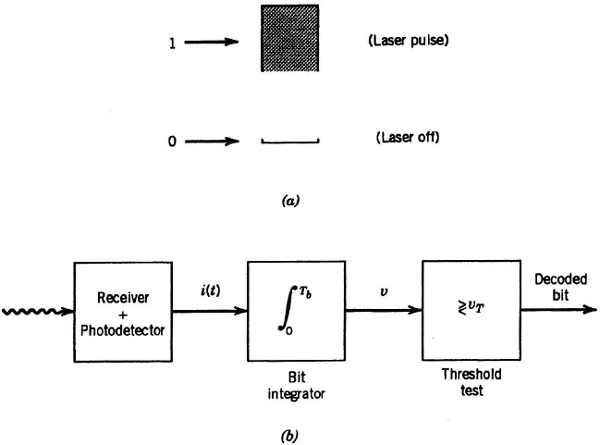6.2 ON–OFF KEYING
In OOK encoding, the optical light is pulsed on or off during each bit time, as shown in Figure 6.2a. Each “1” bit is encoded into an optical pulse and each “0” bit is encoded into an off (no field) bit. Clearly, the maximum source bit rate is directly related to the rate at which the source can be switched on and off. Since lasers and LEDs can be switched at rates up to hundreds of megahertz, the OOK modulation represents a simple procedure for producing relatively high bit rates. (In fact, gigabit rates can be approached by interlacing OOK bit streams from several different lasers.) The light pulses of the OOK bit sequence are then transmitted as a pulsed laser beam in a space system, or can be inserted into the fiber core in a fiberoptic link.

Figure 6.2. On–off keyed (OOK) system. (a) Encoding format. (b) Receiver and decoder.
The OOK direct detection optical receiver is shown in Figure 6.2b. Decoding is achieved by determining the presence or absence of the received pulse field during each bit time. This is accomplished by integrating over the bit interval at the photodetector output and determining if the integrated current sample is above or below some threshold value. Since the integration of the photodetector output is a measure of the received field energy, OOK decoding is based on whether the received optical field energy is high enough. The threshold ...
Get Optical Communications, 2nd Edition now with the O’Reilly learning platform.
O’Reilly members experience books, live events, courses curated by job role, and more from O’Reilly and nearly 200 top publishers.

